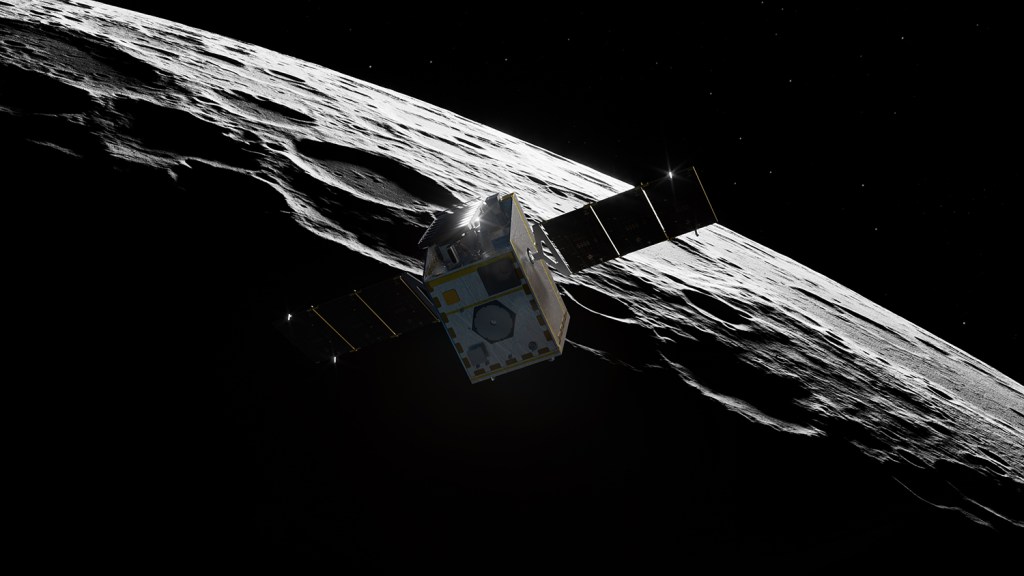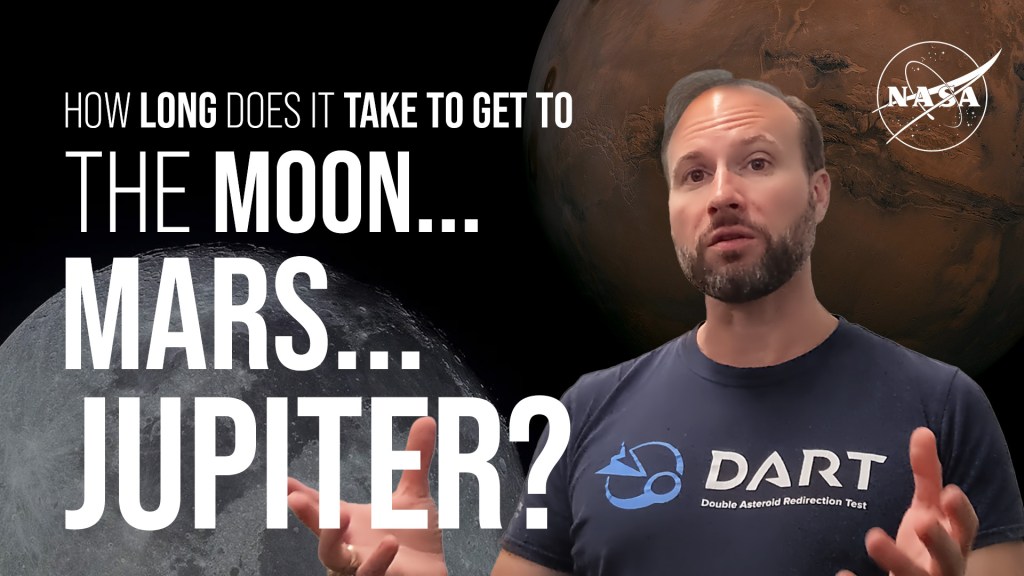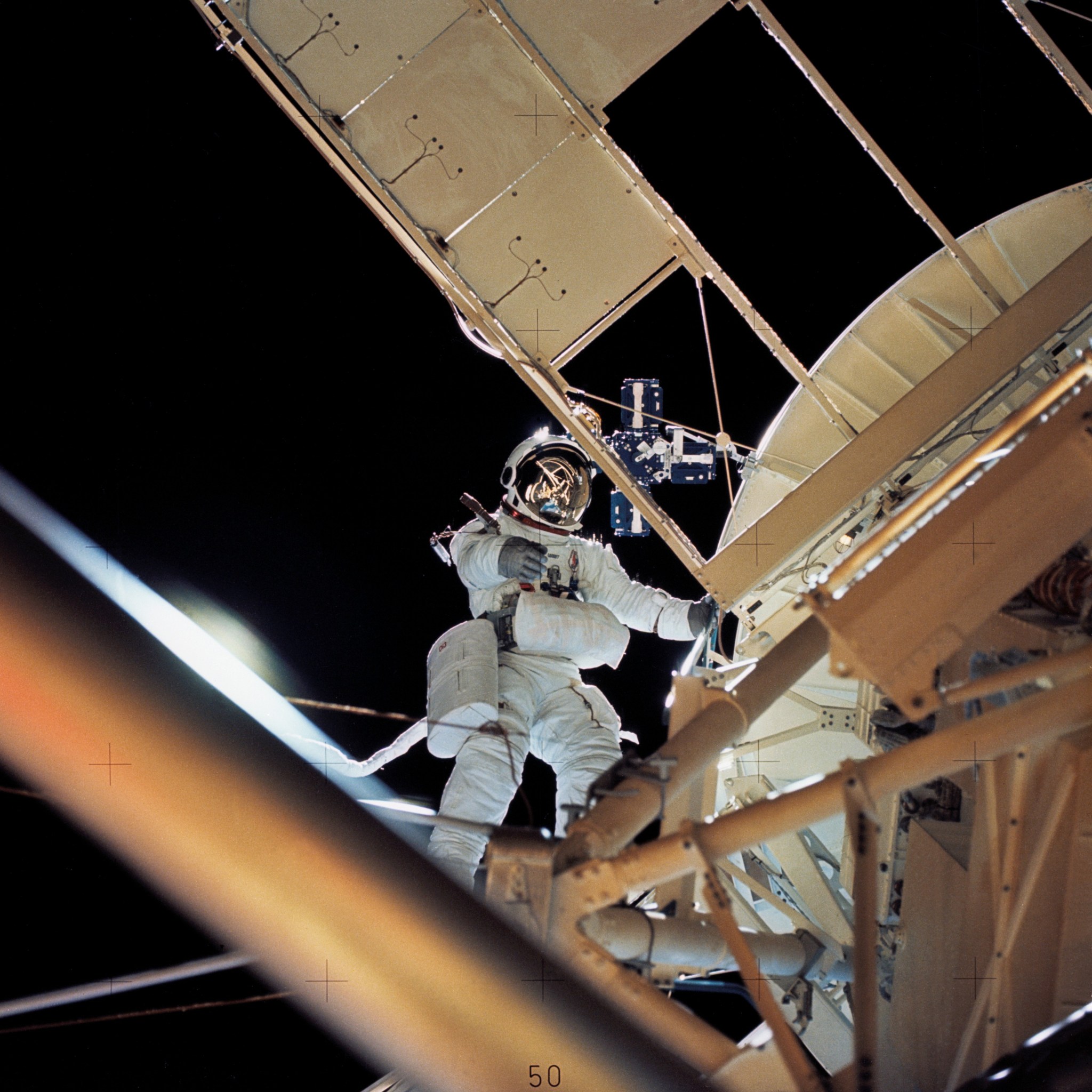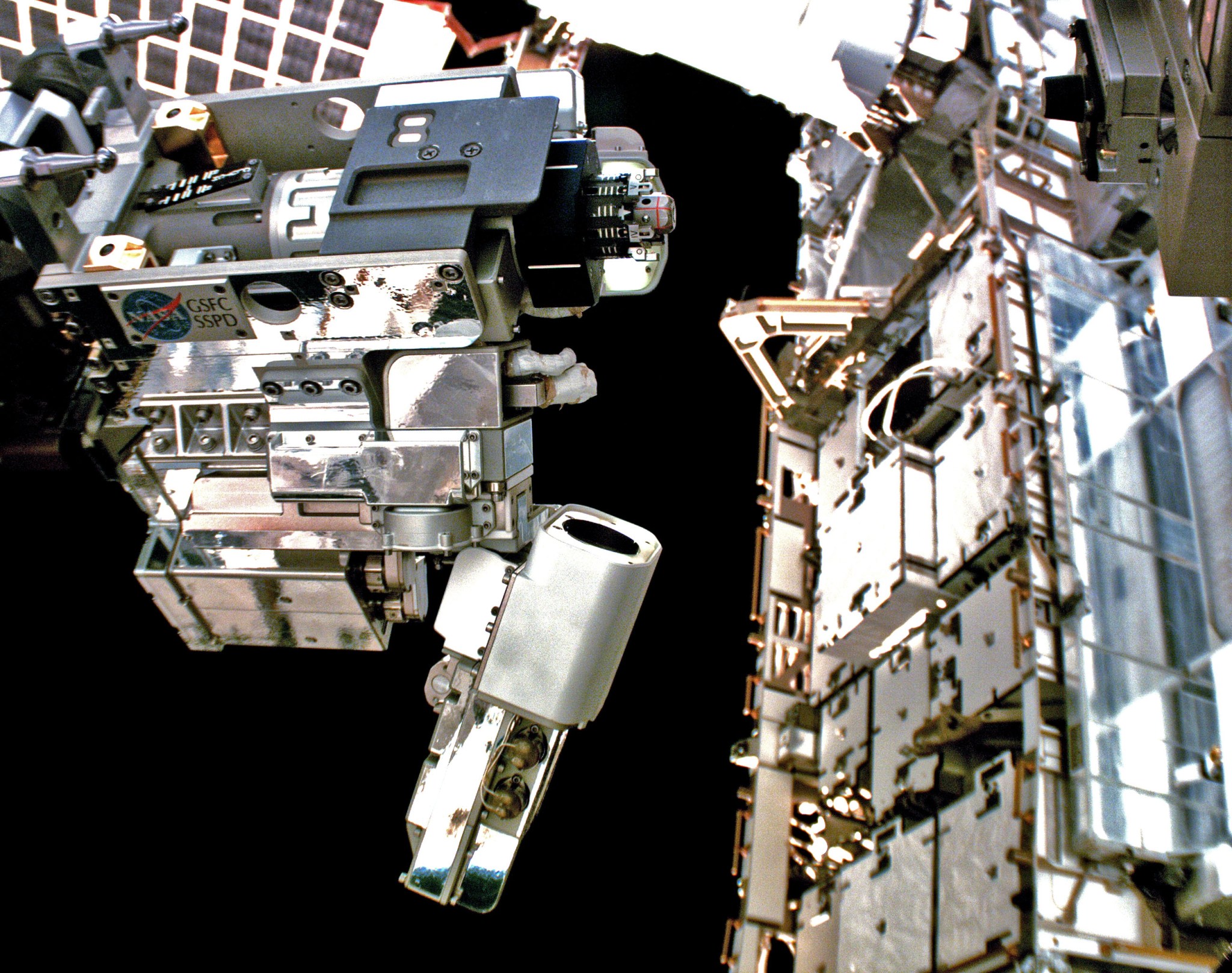A 30th birthday is a big milestone for anyone, and a spacecraft is no exception. Tomorrow, the Hubble Space Telescope celebrates its 30th year in space, but it didn’t get to this point without having to overcome its fair share of challenges. Over the years, it has not only been fixed, but continuously upgraded to make it the discovery-producing machine that it is today.
Servicing (refueling, fixing and upgrading) spacecraft helps make spaceflight more sustainable, affordable and resilient. In honor of Hubble’s exciting milestone, here’s a look back at how human and robotic satellite servicing became a reality and a glimpse at where we’re headed.
Where We’ve Been
Skylab Repair
Things don’t always go as planned in space. In 1973, Skylab, the first space station, experienced a problem during launch. While making its way to orbit, Skylab lost a portion of external shielding, which would make the temperatures aboard the station uninhabitable for the planned three-person crew. Necessity is the mother of invention, and NASA designed, manufactured and tested a heat shield in only a few days. The crew brought the parasol-like heat shield with them and deployed it, saving Skylab and the opportunity for Americans to live in space for the first time. With Skylab, in-space servicing was born.
Solar Maximum Mission Repair
After Skylab came the Solar Maximum Mission, or SolarMax, repair. The spacecraft, which was designed to investigate solar flares and other phenomena, encountered an attitude control issue that caused a loss of stability in 1980. Yet again, NASA innovated a solution. This time, NASA engineers had the mission’s modular design working in their favor. Unlike Skylab, SolarMax’s parts were designed to be easily replaced and upgraded, like how a LEGO fits into another LEGO. In 1984, astronauts on space shuttle mission STS-41C were able to successfully remove and replace the faulty attitude control system module in orbit, supporting the case for modular design and laying the groundwork for future satellite servicing missions.
Hubble Servicing Missions
Satellite servicing turned what could have been a massive problem for NASA into a resounding success story. Soon after launch, NASA discovered Hubble’s primary mirror had a defect that made its images blurry. Thanks to corrective optics installed on the first Hubble repair mission, our now-iconic observatory became a much clearer window into space. Between 1993 and 2009, astronauts not only fixed Hubble, but installed a series of ever more capable scientific instruments reflecting the evolution of technology on Earth. With the help of the five crewed servicing missions, Hubble has been the most productive science apparatus in human history — one that continues to unveil mysteries of the universe, 30 years after it launched to space.
Where We Are
Robotic Refueling Missions 1 & 2
Time and again, the ability to repair and upgrade satellites has helped NASA overcome unforeseen problems. But there’s another piece to the puzzle to consider: refueling spacecraft to extend mission lifespans. Robotic refueling — having robots rather than astronauts service satellites in space — could usher in a new class of sustainable missions. Robots can perform routine tasks efficiently and safely, in distant locations humans may not be able to reach. To test and advance refueling technologies, NASA launched Robotic Refueling Missions 1 and 2 in 2011 and 2014, respectively. The two successful proof-of-concept missions practiced cutting wire, removing caps and more from outside of the International Space Station, demonstrating tools and techniques necessary for in-space refueling.
Robotic Refueling Mission 3
With the Robotic Refueling Mission 3 (RRM3), NASA is demonstrating the technologies needed to transfer cryogenic fuels, which could be critical for helping spacecraft journey farther into our solar system. The ability to store and replenish cryogenic fluid means a spacecraft could be refueled at stops along the way for a long-duration journey, instead of having to launch with all of its fuel upfront. RRM3 launched to the International Space Station in December 2018, and successfully stored cryogenic fluid without any fluid loss for four months. Storing cryogens in space can be difficult because their extremely low boiling points cause them to boil off over time if the temperature cannot be maintained. RRM3’s four-month storage of 42 liters (more than 11 gallons) of liquid methane represents the longest-ever storage of such a large amount of cryogenic fluid in space with zero boil off. In addition to this storage, RRM3 recently demonstrated operations of its three primary robotic tools.
Mission Extension Vehicle
With technology demonstration missions, NASA is getting ready for the next big step: a spacecraft designed to refuel satellites. NASA partnered with Northrop Grumman to provide technical assistance for its recently launched Mission Extension Vehicle, or MEV, to extend the life of an Intelsat communications satellite. The spacecraft, which launched in October 2019 and successfully rendezvoused with its client satellite just a few short months ago, acts as a jet pack or tow truck for the satellite. When docked to its client satellite, the fuel-carrying spacecraft provides attitude control to maintain orbital position and maneuvering. Unlike Hubble, which was designed to be serviced, Intelsat was, like the vast majority of other satellites, designed to live its life in space alone.
Where We’re Going
On-Orbit Servicing Assembly and Manufacturing (OSAM)
Credit: NASA
Attaching one spacecraft to another for thrust and maneuvering, acting like an external booster, is one way to extend a spacecraft’s lifetime. Another approach would be to directly refuel a spacecraft. NASA is advancing the technologies needed for a robotic mission that can do just that, as well as provide repairs and upgrades to allow for flexibility and cost-effective operations. OSAM-1 (formerly known as Restore-L) is developing a suite of technologies that could act as a full-service mechanic and mobile refueling station for satellites. OSAM-1 will blend various technologies practiced by previous missions, including dexterous robotic arms, specialized tools and more. The capabilities will establish the basis for in-space robotic repairs and upgrades, developing the ability to make a satellite better than it was before.
NASA has previously demonstrated assembly in space by separately launching components of the International Space Station and attaching them over the years to construct the orbiting laboratory we know today where for almost 20 years, humans have lived and worked continuously, advancing scientific knowledge and demonstrating new technologies, making research breakthroughs not possible on Earth. That assembly process required astronauts conducting spacewalks to assemble and maintain the station. Fully robotic assembly is the next piece of the assembly puzzle.
The same robotic technologies that would allow a servicer spacecraft to catch up to and grasp a satellite, operate a suite of specialized tools to perform precision tasks and finally refuel a satellite, could also be used to connect smaller parts in space to assemble a structure much larger than a single rocket can loft. To this end, NASA and Maxar Technologies will assemble a large antenna via the Space Infrastructure Dexterous Robot (SPIDER), which is a part of the OSAM-1 mission. SPIDER will also demonstrate autonomous in-space manufacturing, creating a 30-foot long boom with onboard materials.
OSAM-1 is one of multiple planned NASA technology demonstration missions to bring key robotic technologies to operational status. OSAM-2 (formerly known as Archinaut One) will be another demonstration, a NASA partnership with Made In Space, Inc., and will use additive manufacturing to build large-scale structures in space.
Being able to launch the components of a large, deep-space telescope separately and assemble them in space can break the current constraint of telescopes needing to be small enough to fit on a single launch vehicle. Technologies demonstrated by OSAM are laying the groundwork for in-space assembled observatories to peer deeper into our universe and possibly find life beyond Earth.
From its beginnings with Skylab, to robotic refueling demonstrations on the International Space Station, in-space servicing, assembly and manufacturing continues to evolve. Hubble’s immense success and 30th anniversary are a testament to what we can accomplish with the help of satellite servicing.
Recent and upcoming demonstrations challenge the notion that a satellite’s lifespan is finite, even one that was not designed to be refueled or repaired. Once matured and operational, this capability promises to usher in a new era of spaceflight and make what was once thought to be impossible, a reality.
By Vanessa Lloyd
NASA’s Goddard Space Flight Center, Greenbelt, Md.





































